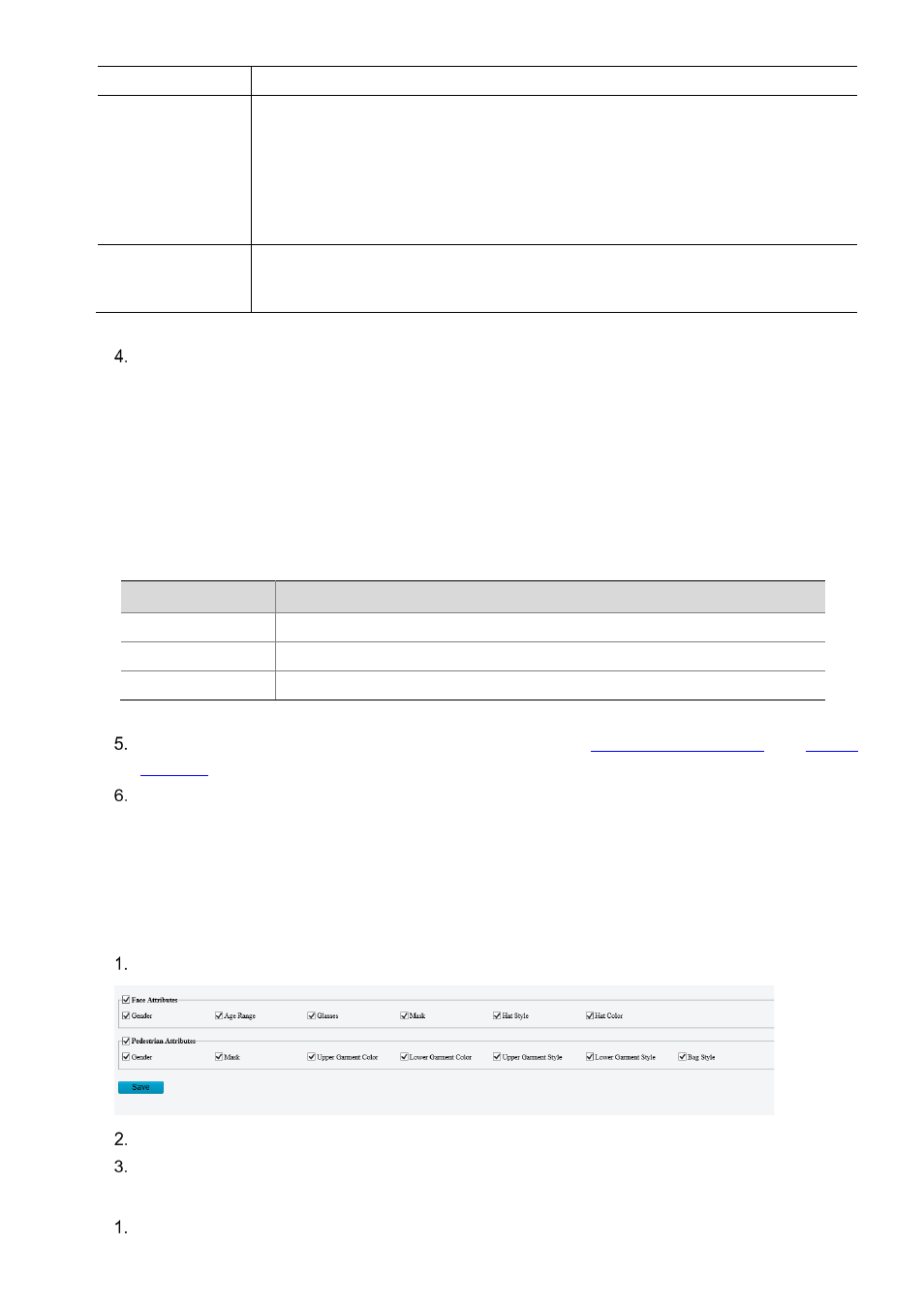20 attribute collection, Collect attributes, Monitor by attribute – Uniview IPC675LFW-AX4DUPKC-VG 5MP Outdoor Mini PTZ Active Deterrence Network Camera with Night Vision User Manual
Page 100: Attribute collection

95
Shield areas that may interfere with detection or trigger false alarms. A total of 24 shielding areas are
allowed, with a maximum of 8 shielding areas per image.
(1) Move the camera to the desired position manually or using presets.
(2) Click
Add
.
(3) Adjust the position and size of the area or draw an area as needed.
Adjust the position and size of the area.
Point to the area and drag it to the desired position. Drag the corners of the area to resize it.
Draw an area.
Click in the preview window to draw a polygonal area with up to 6 sides.
Item
Description
Shield Area
Select to show or hide the shielding area.
Preset
Click to move the shielding area to the center of the image.
Delete
Delete the shielding area.
Set the alarm-triggered actions and arming schedule. See
Click
Save
.
5.6.20
Attribute Collection
1.
Collect Attributes
You can collect attribute information of monitored objects.
Go to
Setup
>
Intelligent
>
Attribute Collection
.
Select the attributes to be collected.
Click
Save
.
2.
Monitor by Attribute
Go to
Setup
>
Intelligent
>
Attribute Collection
>
Monitor by Attribute
.
Fire Detection Overlay Select whether to show the object bounding box.
Auxiliary Visual
Confirmation
Enable
Auxiliary Visual Confirmation
to work with smoke and fire detection to confirm detected
fire or heat for more accurate detection results. After the fire detection detects a fire point, if the
smoke and fire detection confirms that the fire point has smoke, a fire alarm will be reported.
NOTE!
•
When both fire detection and auxiliary visual confirmation are enabled, all smart functions
except smoke and fire detection are unavailable.
•
This function only works during the day.
Sensitivity
Set the detection sensitivity.
The higher the sensitivity, the more likely fire or heat will be detected, and the more likely false
alarms will occur.